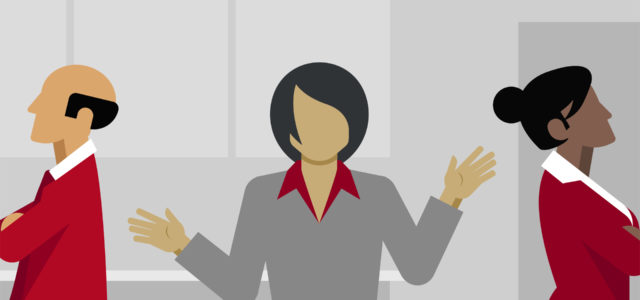‘Leading Digital Transformation’ is a weekly podcast series produced in collaboration between The Digital Transformation People and Rob Llewellyn digital transformation advisor and founder of CXO Transform.
During this series, Rob interviews experienced practitioners, authors and thought leaders whose stories and experiences provide valuable insights for digital transformation success.
In this episode, Rob speaks with Andrew Ward who is a design focused Digital leader; a seasoned NLP & ILM coach and mentor who uses a design thinking approach to create customer-focused products.
Andrew says he is continually looking to the horizon for the next innovation which will change the defined strategy ensuring the vision is always ahead of the curve and grows businesses through telling compelling stories and building customer relationships, lasting narratives and relationships that redefine the experience.
With many years’ experience in CX, design thinking and digital transformation, it has become clear to Andrew and his colleagues that in order to orchestrate change it is important that the messaging takes into account the disciplines and perspectives of all those involved in enabling and touched by the change. This way by finding a common language and understanding, full alignment and engagement can be achieved.
Recognising the importance of seeing the world through other people’s eyes is what has led Andrew and his colleagues to form the new Layers of Change Model that he discusses with Rob in this interview.
“Everyone wants to do the right thing, but they don’t necessarily even know what the right thing is or don’t agree. And when it hits onto the “don’t agree”, a lot of the time from what we’ve seen, that’s because they actually don’t understand the other point of view, because they’re coming at it from a different direction.”
Listen here and read the full transcript below.
Transcript
Rob Llewellyn [00:00:22] I’m joined today by Andrew Ward. Andrew has been bringing about a refocus to experiences and the ways technology can help for almost 20 years. With a varied career ranging from a children’s farm and hedgehog hospital through to global change with the University of Nottingham. He’s identified the layers of change which can help bridge the communication boundaries which are inherent with such changes. He’s now part of the digital team at British Gas Business, where he’s helping bring the same transformational changes to how they interact with customers and provide a better level of service. So let’s learn more about this by jumping into the interview with Andrew. Andrew, welcome.
Andrew Ward [00:01:11] Thank you. Morning.
Rob Llewellyn [00:01:12] Hey, Andrew, you talk about layers of change which can help bridge communication boundaries which are inherent with change itself. Who are the layers of change you talk about actually for?
Andrew Ward [00:01:25] We think the layers of change vary between those that are performing a transformational change in an organisation. So, either those that are trying to structure a large change program or the individual change agents that just need help to understand how to explain their idea to those that feel like they’re talking a different language. We’re hoping that the different layers allow people to appreciate the different points of view all the way from the contextual that occurs within every organisation down through the touchpoint into the data-based insights that tell you what’s happening in different datasets. So, our focus is mainly as a communication platform for those that are interested in change in some way or want to get over the communication barriers that they experience in a lot of organisations. The main one I was trying to tackle when we created this was between information services (or I.T.) and marketing and the rest of the business, because there’s a lot of time where it feels like you’re talking a different language to one another, even though you’re trying to bring about the same positive outcome for your organisation.
Rob Llewellyn [00:02:41] Now Andrew, I mentioned in the introduction that you work with British Gas, which is a pretty large organisation. Are these layers of change applicable to all sizes and types of organisation?
Andrew Ward [00:02:51] We haven’t found one that it’s not yet. So even in British Gas Business where I am now, you have layers of understanding. So if we think of those on the ground with your user experience designers as an example, then looking at the journey or the interaction point that someone, a customer is focussed on, but aren’t necessarily looking at the way in which the brand ties into it. So what’s the unique selling point or the wider contextual change? So we have found that it works for, well, for very small businesses. It’s a lot easier because there should be less degrees of separation. But once you get into an enterprise organisation of seemingly any size, it helps stabilise the conversation between the different levels and different skill sets that are involved in any such change.
Rob Llewellyn [00:03:45] Can you elaborate on how the layers of change actually help an organisation?
Andrew Ward [00:03:51] Yeah. So if I use an example from when I was at the University of Nottingham, which is where we came up with the general framework for this idea, we’re trying to bring about a change for the university and they are focussed in the United Kingdom, China and Malaysia. They also have very different priorities across the business. So you’ve got some areas that are looking at undergraduates, some areas that are looking at postgraduates, commercial partnerships, the whole infrastructure and building of the estate. So we identified we needed to bring a united understanding. And it was a little bit of a strange one when we first came up with it, it was the conversation of if you spoke to someone in a pub that had no idea what a university was about because they hadn’t been to it, what’s the highest level that they would understand that a student goes through? And that’s your contextual layers. That’s the layer that applies in everything. So if we look at an undergraduate student, you’ve got a decision-making process of where you’re going to go, what are you going to do. You’ve got some form of application and involvement to be accepted, or supply the right qualifications to be able to be accepted. You’ve then got this whole being a student and then you’ve got graduating and then going off and get a job. So at a very, very high level, everyone can agree that is an undergrad student lifecycle. But then under each of those stages, you bring out the more functional elements, so if I choose ‘decision-making’ again. You’ve got chair-based research. So looking online, looking at different reviews online. Face to face research, which could be attending an open day, speaking to a lecturer. Course planning and selection. So what type of course am I interested in? Now I’ve actually spoken to someone, I might be more interested in a different type of course. And then an inquiring decision making. What do I actually require to be able to move onto the next stage? So even at that high level, those that were practitioners within the area still agreed all of those elements needed to take place. You then apply onto that the brand, what we call 10,000 feet, which was the unique selling point. What is the differentiator for a face to face research? So for the University of Nottingham, some of it was about the high quality of the estate, the quality of the lecturers, all about the quality of the provision. So they wanted to make sure that that was shown at that point. But then as we broke it down further and further, you could take it all the way down to the individual touchpoint of, well, in order for a student to attend a talk of this high quality, what’s the journey that they need to go on? And what are the variations that change between those that are doing it digitally versus those that are doing it physically? And how does that all interconnect? So as you got down, you got into a bit of a pyramid from the decision making as a single thing into four stages. The functional and then it expands into the brand and it keeps going out. On my portfolios, I’ve got a few of the examples on there so you can see the high-level journey and then how you can use that to inform different change programs. So we were looking at a number of different projects and aligning them to which key points in those contextual journeys we would be able to influence by the different transformations of change, either improving our legacy, improving our website, improving our student record system, all of these types of things were all on the cards and it helped us identify which elements of the journey and which projects have the biggest bang for their buck, which would have the biggest impact on that audience. And it helped us talk a very, very similar language, even though we all had different, shall we say, motivations for why the change needed to take place.
Rob Llewellyn [00:07:32] That sounds really interesting, Andrew, but what problem does it actually help to solve?
Andrew Ward [00:07:37] I think it comes back to the cultural problem that we all have within transformation. Everyone wants to do the right thing, but they don’t necessarily even know what the right thing is or don’t agree. And when it hits onto the “don’t agree”, a lot of the time from what we’ve seen, that’s because they actually don’t understand the other point of view, because they’re coming at it from a different direction. So we believe the layers of change allow you to bring those two conversations to a similar point. One example we’ve taken a little bit further on that is using strategisers’ work of the business model canvas the value proposition to be able to unify that level of understanding, and that brings things to a more equal playing field. And we believe the layers of change also do the same. They bring it on to – so you’re discussing things at the same level, rather than one person talking about a colour change or a button change or something really small that would impact a user and another person talking about a new provision of a mobile app delivering a new talk, understanding why an audience or segmentation, why an audience wants to interact with you, what they need to get out of that interaction.
Rob Llewellyn [00:08:55] Andrew, can you give an example of this in practice so we can get a better feel as to how this works in the real world for an organisation?
Andrew Ward [00:09:02] Yes. So I’ll use the University of Nottingham again because that’s the one we did the most work on whilst I was there. So I was working with three colleagues at the time: Mark Griffin, who was an architect, Mike Watson, who was a business architect, and Mike Haber, who was a data analyst. And we were trying to understand the scale of the transformational change that the University of Nottingham wanted to undergo. And whilst we were going through that, we had many different disciplines, some that identified it should just be an I.T. change programme. We needed to sort our data out. We had other areas that said we need to engage better in the market, we had others that said we needed to improve the student experience, we had others who said we needed to increase research funding through better engagement with research councils and others that said we need to support our local businesses or our local communities to a better level, as well as a plethora of others. But they’re the core ones. So from there, we modelled out under all those different cases, the high what we called the 32,000-foot journey for all of those different audiences. So the highest contextual level for the different types of audience and different types of business that the university was undergoing. From there, we brought united understanding of all of those people, of each other’s different problems. We could then identify under what the experience, what the journeys were for each of those audiences. And then in turn, identify the pleasure and pain points. So we modelled out the experience at a relatively high level to start with. In some areas like undergrad, we went into quite a deep dive all the way down to the individual touchpoints that they had and did a number of behavioural and ethnographic research in it to observe the behaviours of students to see if our data was correct. But from that, we got a full understanding and a full agreement from the different areas of the University of the order of change. What needed to occur first, because you could identify some areas where we wanted to drive change. The experience actually wasn’t bad. Yes, there was motivation to make it even better, but it wasn’t bad. But in other areas, we had some areas that students weren’t particularly happy with. So that highlighted areas that we needed to change quite significantly and quite quickly. And that allowed us to bring about a united focus, even though to start with, it was very different and in some cases opposing commercial views on the direction of travel that we should be following. So that’s mainly where we found it helps the translation between different audiences to be able to bring them together and have a discussion, I suppose an equal playing field, without the specialist knowledge. Alongside that, it also allowed people that didn’t necessarily focus on one area compared to another. So those that were focussed on the community didn’t necessarily spend a massive amount of time focussed on the undergrad or community. So they had a different perspective and were able to come up with new ideas that they’d used when doing community outreach that would actually work within our undergrad community as well. So that fresh perspective without feeling well, stupid, really, you didn’t feel like you were being an idiot, because you could actually see the structure. It was put into a way that everyone could understand and therefore we could appreciate and discuss at an equal level, which really levelled the playing field and opened a lot of conversations.
Rob Llewellyn [00:12:44] What was the biggest challenge you encountered in this particular example at the university, Andrew?
Andrew Ward [00:12:50] As with everything, funding is always the biggest challenge from my experience at least. So we did a small amount of work to start with to show that the idea was correct and doable. And when we did that, we identified on a research professor, because we thought that was going to be the easiest one. Once we modelled that, we then moved on to the undergrad students and it just ballooned, the amount of data that was involved. So, if you remember I mentioned a pyramid going through from the decision making. The amount that expanded out was crazy. The amount of different variations, the amounts of different options that we gave students in different scenarios was crazy. But you never got to see that because you only previously looked at it on this student who was going to study chemistry. What options do we give them? The options we gave that one student were perfectly reasonable. But when you looked at every possible variable that they could take and every possible interaction, that ballooned to a massive level. So I was really glad that we got Mike Haber because he managed to create a Neo4J database which modelled the relationships and the entities of every possible touchpoint, which is just a hellish view if you look at it, it’s a giant thing with lots of bubbles on, but that allowed us to drill down then. And getting that data was eye-opening because there was no single source of truth. So you had to go out and interview people to understand how will the relationships work together, what the knock-on effect of one change to another. And then you’d find something new. So you’d have to go back to someone that you’d already interviewed to say, well, what happens in this scenario? So, after we secured the initial funding, we were allowed to go on to do the wider modelling piece. And I think it’s the scale of the change. And for us, that highlighted that the normal transition of change that we were planning to do of just going through the identify the pain points and bring about some changes, wasn’t going to be the right way. So instead, a leapfrog approach was what was required. So we needed to identify what the future should look like and jump to that rather than transitioning through to it.
Rob Llewellyn [00:15:11] Andrew, our listeners generally consist of managers and leaders who are involved in transformation and change in many different industries all over the world. How can they practically put what you’ve been talking about today, how can they practically put it to use in their own organisation?
Andrew Ward [00:15:28] I think for the most part, it’s not necessarily putting a structure in place. It’s just about looking at the layers and being able to realise where you naturally are. So myself, I naturally think of the experience. That’s where my natural mindset goes. It’s not on the individual touchpoint. It’s not up at the commercial objectives, I’m focussed on the experience. So for me, being able to look at the layers and be able to understand where I am and then whilst having a conversation with somebody else, identify either very openly and ask them where they think they are, or just from the conversation, identify what type of language they use, what type of descriptions they use when they’re describing a problem. So that identifies where they are within the layers. And then you can understand how you need to transform your language, your presentations, the way in which you’re interpreting information or displaying information to those different individuals or audiences so they’ll actually understand it in a much cleaner way. It’s like when we describe something at a very high level, strategic level, to someone on a call agent, so on the contact centre floor. Most of the time, yes, they can hear it. They can hear we need to make money, we need to grow, we need to save money, etc. But they can’t relate it to what they do on a day-to-day basis. The layers of change allow you to see where they are and try and find the lowest level that you can naturally explain things on and the highest level that they can understand things on and still be able to relate it to their day job and that brings them on that journey, because otherwise, you’re just doing change to them. You’re not bringing them along. So I feel mainly it’s as a communication method or a communication technique that helps with that description.
Rob Llewellyn [00:17:21] So what should we be investigating, Andrew, to be able to use this in the real world, in the organisations that our listeners are working in on a day to day basis?
Andrew Ward [00:17:32] There’s quite a collection. I thought about that before I came on of where the influencers were and it ranges depending on the levels and probably dependent on where the individual is that’s actually looking at the layers. So if we start at the top, “The Essentials of Strategic Management” would be a good one by Pitt and Koufopoulos going through “Principles and Practice of Change” by Deborah Price. I can give a list of these as well, but when we go through the lower levels, it’s things like “Don’t Make Me Think” by Steve Krug or one of my favourites is “The Elements of User Experience” by Jesse James Garrett, because he puts a structure to those elements. And then there’s obviously the wider pieces of design thinking. So Tim Brown’s “Change by Design“, there’s plenty of reading out there. Dependent on the organisation or size. My personal preference to try and kick-off and unify the understanding is the design sprint that Google evangelized and they’ve pushed forward because that helps you bring that united understanding to a single problem in the room and allows you to test that out with an audience as well. And if you continue that practice moving forward, once you developed or deployed whatever that change may be, you can then progress on to observe the behaviour. So that’s where something like “Here Comes Everybody” by Clay Shirky would be particularly key because that’s talking about everybody is different, but everyone is the same at the same point. We want to be treated the same as everyone else, but we also want to be treated as individuals. And the ability of bringing about the change properly means you can understand how to communicate those messages to the mass, whilst it’s still feeling like it’s communicated to the individual and giving that level of personalisation that should drive forward the change and bring up the adoption for almost any audience.
Rob Llewellyn [00:19:28] Now, earlier on, Andrew, you mentioned that one of the challenges you faced at the university was getting funding. But aside from that, what are some of the – of course, most organisations face these funding challenges – but aside from that, what are some of the big challenges that people who want to implement this concept embrace this concept, what are the big challenges that they need to look out for?
Andrew Ward [00:19:50] I think it’s being open-minded. One of our biggest successes was the utilisation of Wi-Fi data. So we already had it, but we didn’t know we had it. Those that were looking at how do we understand how people move around the university, how do we understand which areas we should develop a little bit further? So one of the use cases, we were asked “where should we put a new student support centre?” And we had a gut feeling, because our Portland Building always had a lot of traffic, and that may have just been because it had the best Chinese food out there, so it drove a lot of traffic to that building. But we could also say the same of different buildings at different times. So we went through quite a long-winded piece to change, to identify how to work out how people were moving. And it wasn’t until we changed our language, so we started adopting what has now turned into the layers of change, to explain the problem to a much wider audience in many different ways to gain their buy-in and understanding and one of our technicians identified, well why can’t we use the logs? We can identify from that the density of people in a building at any time. So we took those Wi-Fi logs that we already had, so it was existing data. We anonymised all of them. So there was no way to identify who anyone was because we were purely looking at volume and we put that into a tableau model. And that tableau model identified the movement of different MAC addresses between one building and another. And we could identify the buildings that people spent the most time in without understanding who the people were and that allowed us to bring a much better solution to light further down the line from explaining it in a completely different way to people that normally weren’t involved in any of those strategic conversations or in any of those discussions, because they spoke a different language, they spoke “techie”, and the marketing people didn’t speak techie, so they couldn’t have that conversation. The estate’s people that were looking at actually building the provision, they don’t speak techie. So you need that translation framework if you like, to be able to pass one message to another without the Chinese whispers that usually occurs when you employee relationship managers or something similar.
Rob Llewellyn [00:22:18] Andrew, fascinating topic. We’re gonna have to wrap it up there. But before we do, I know you mentioned a couple of books earlier on, but is there anywhere else where we can point people who want to learn more about the layers of change?
Andrew Ward [00:22:32] Yeah, I have an open post on LinkedIn, so it’s just Andrew Ward or I’ve got a portfolio site of Andrew Ward dot co that has a number of examples that you can see of the layers of change as well as some of the examples I’ve talked through today.
Rob Llewellyn [00:22:46] Fantastic. And we will include links to those in the show notes. Thank you so much for your time.
Andrew Ward [00:22:52] Thank you very much.
Announcer: [00:22:54] We hope you enjoyed this episode of “Leading Digital Transformation” with Rob Llewellyn and The Digital Transformation People. Visit www.thedigitaltransformationpeople.com to secure the knowledge, talent and services you need for digital transformation success. To continue your journey as a certified transformation professional, visit www.RobLlewellyn.com. Be sure to subscribe to the podcast and follow us on Twitter @TheDigitalTP and @RobertLlewellyn
Article by channel:
Everything you need to know about Digital Transformation
The best articles, news and events direct to your inbox
Read more articles tagged: Change & Transformation, Featured






